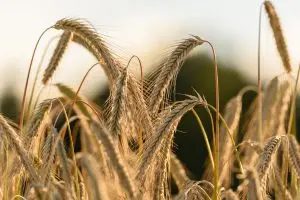 Robin Tunnicliffe has farmed for almost 20 years, growing a wide range of organic vegetables for local restaurants and farmer’s markets. She remembers that “when I first started farming, my mentor gave me a list of planting dates.” This essential farmer-to-farmer teaching gave her confidence thanks to its hard-won wisdom, and she recalls thinking “Good! Now I know what I’m doing!” But she soon found that the lessons of tradition and experience were expiring, thanks in part to climate change.
Robin Tunnicliffe has farmed for almost 20 years, growing a wide range of organic vegetables for local restaurants and farmer’s markets. She remembers that “when I first started farming, my mentor gave me a list of planting dates.” This essential farmer-to-farmer teaching gave her confidence thanks to its hard-won wisdom, and she recalls thinking “Good! Now I know what I’m doing!” But she soon found that the lessons of tradition and experience were expiring, thanks in part to climate change.
Tunnicliffe began to notice that the changing climate was throwing reliable, longstanding patterns and expectations out the window. She notes that unpredictable seasonal weather now means “the map has been wiped clean a little bit,” and says: “I mentor a lot of new growers. I wish I could give them that list of planting dates that I got. But I can’t do that.”
Farmers know all too well that agriculture is highly dependent on weather. Modern methods, techniques, and technologies have made today’s crop and livestock farms increasingly productive, but agricultural success still depends on getting just the right amount of rain and just the right amount of heat at just the right time of year.
- The planting, maturing, and harvesting of crops all depend on consistent seasonal patterns.
- Livestock depends on feed, water, and a tolerable range of heat and humidity for healthy, productive growth.
- Climate helps determine which pests and diseases will spread, and so how much time, effort, and money farmers must spend on herbicides, insecticides, and other defences.
- Beyond the harvest, patterns of temperature and weather affect the entire supply chain of storage and transportation that brings food from the field to the dinner plate.
From the largest farm to the smallest market garden, from planting to eating, and at every stage in the cycle of production –from choosing seed to transporting livestock – agriculture and agri-business thoroughly depend on climate. And the climate is changing.
Farming in a hotter climate
Seasonal temperatures are very important to farming. The length of the growing season, typical average temperatures, and the timing and severity of hot and cold spells all work together to determine what crops can be grown. Climate models show that Canada’s cold season will shrink, leaving a longer growing season. But with that possibly good news comes a huge increase in high-temperature events and changes in precipitation patterns – especially the increasing likelihood of flooding and drought in the same year – which will require farmers to make significant changes.
Leave a Reply